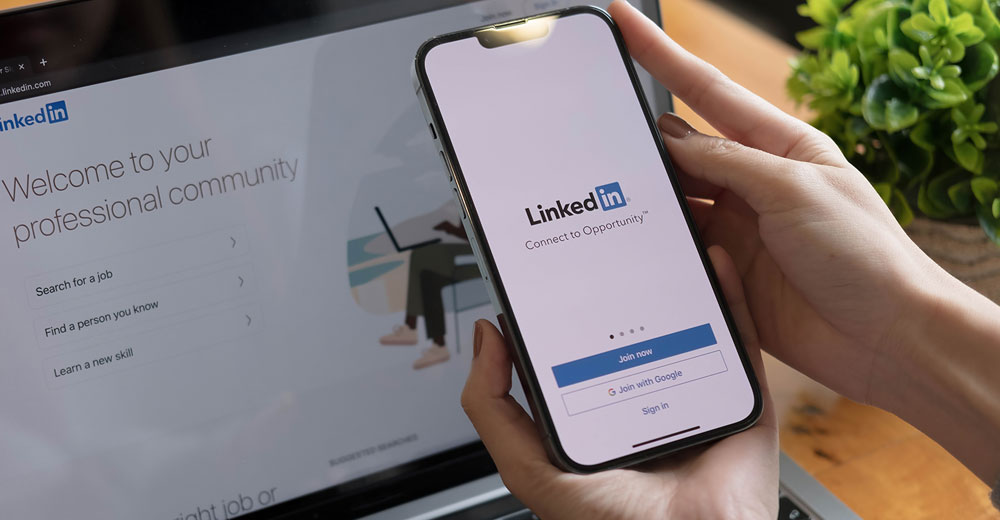LinkedIn on Tuesday disclosed algorithm changes designed to favor conversations catering to niche professional interests. Axios first reported the shift.
The top 1 percent of power users grabbed much of the attention on its platform, LinkedIn found through internal research in 2018.
The criteria for posts showing up in members’ feeds can be summed up as “people you know, talking about things you care about,” said LinkedIn Senior Director of Product Management Pete Davies.
LinkedIn prioritizes and ranks posts based on the following criteria:
- Individuals a member has interacted with directly;
- The member’s profile;
- The member’s colleagues; and
- Who would benefit from hearing from the member? It terms this “creator side optimization.”
“The actual algorithms are fairly straightforward,” said Stephen Lynch, senior communications manager at LinkedIn Engineering.
One selects likely content for a member’s feed, and the other finalizes what actually pops up in the feed, he told the E-Commerce Times.
One algorithm is called “Community-focused Feed Optimization,” and the other is called “Communities AI: Building Communities Around Interests on LinkedIn.”
LinkedIn tested 100 variations of its feed models through online A/B testing over the last year and implemented several targeted optimizations that make it easy for members to find content that interests them personally, Lynch said. “We are heavily invested in making sure that our members see things that are interesting to them.”
The Same Difference
“It’s good to know that LinkedIn is continuing to tune and adjust what we see in our feeds to make them more useful and relevant to each of us individually,” said Nicole France, principal analyst at Constellation Research.
“For what it’s worth, mine doesn’t seem to have changed much,” she told the E-Commerce Times. “I still mostly see posts from people in my immediate network, plus a few ads, which I tend to disregard.”
How to Leverage LinkedIn
LinkedIn’s algorithms support video, images, multi-images, text, and long-form articles. Users should consider which is the most appropriate for the topic, Davies recommended. Support for more formats is on the way.
Best practices for reaching an audience with the LinkedIn feed are encouraging conversations, being authentic, and focusing on niche ideas — such as “#performance management,” for example, rather than the broader term “#management,” Davies said.
Leveraging Focus on Niches
LinkedIn’s focus on niches appears to be part of a larger effort to monetize its platform further.
“We’re seeing increased focus on more personalized targeting across marketing,” said Rebecca Wettemann, VP of research at Nucleus Research.
LinkedIn is focusing on this area, she noted.
This makes sense for LinkedIn given Microsoft’s ownership, Wettemann told the E-Commerce Times, and given “an increased focus on understanding how LinkedIn relationships can be leveraged to support CRM efforts like account-based marketing.”
It “also helps to differentiate LinkedIn from Twitter better,” she added.
Related: The Art of Timing Social Media Posts for Retail Success | July 25, 2023
Adobe earlier this year extended its partnership with Microsoft and announced a new integration with LinkedIn to accelerate account-based experiences through new marketing solution integrations.
A new LinkedIn Pages feature now provides marketers with a hub to connect with their employees, customers, and prospects. The platform plans to release new features quarterly.
LinkedIn also introduced a “Follow” button, which lets marketers select a Custom Call to Action (CTA) button on the Page they want. It provides five new options to turn Page visitors into potential leads. New analytics provide deeper insights into who is engaging and converting.
Also, on Tuesday, HG Insights announced an agreement with LinkedIn that will let marketers apply technology filters to their audience segments and deliver more relevant ads on the network.
“LinkedIn is getting into the advertising game, and at some point, it has to be targeted advertising,” noted Michael Jude, program manager at Stratecast/Frost & Sullivan.
“There are so many advertising channels that it’s bedlam for the poor advertiser, so major advertisers are looking for that kind of support from social media, he told the E-Commerce Times. “They want results. They want to be connected with people who are likely to buy.”
User Reactions
LinkedIn in 2019 is where – @YouTube was in terms of videos in 2007 – @facebook was in 2015. Has a lot of potential, but SF firms don’t get media. So, if it’s trying to be a media platform, it needs help. Lots of it. https://t.co/GpxwmvbRNB
— AshkanKarbasfrooshan (@ashkan) June 25, 2019
“Love the intent of this change,” tweeted Mike Pilarz. “Eager to see how it’s executed. “Hopefully, this means fewer LinkedIn posts about ‘finding my why.'”
Not sure of the details yet, but this is the right way to go and, hopefully, will benefit vertical publishers like ours. Already, LinkedIn is one of the largest referrers for us. https://t.co/5zdKRssgPA
— Rafat Ali, Media Operator (@rafat) June 25, 2019
LinkedIn “hasn’t found the right hook to get more than a small % of users viewing + engaging w/ its news feed,” tweeted Ingrid Lunden.
There is a difference between what people explicitly say they are interested in and what they actually spend time reading, Constellation’s France remarked.
“For LinkedIn and other social media platforms, getting the balance right is tricky,” she said. “The particular challenge LinkedIn has is that it is squarely focused on the professional network.”
A lot of advertising is a turnoff, Frost’s Jude observed. “At what point do you decide that there’s so much advertising that the utility of connecting to your professional network on that platform has diminished to the point of no return?”
























































Social Media
See all Social Media